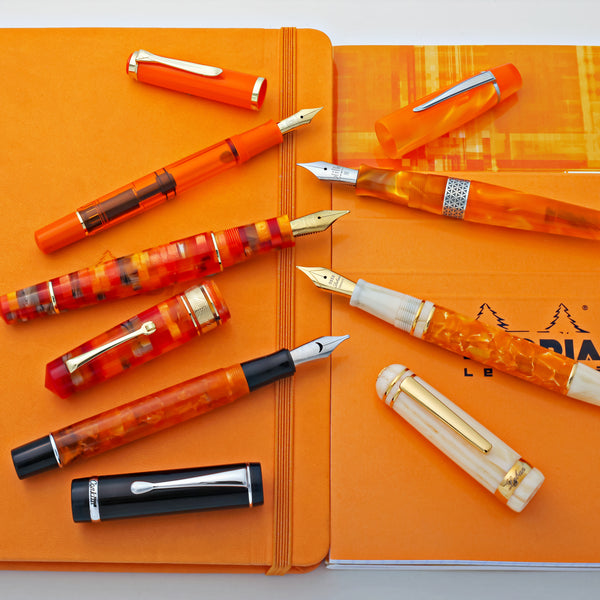What To Look For When Buying Fountain Pens For Calligraphy
When it comes to honing your calligraphy skills, it's all about the nib. This is the part of the pen that distributes ink onto the page. To the beginner's eye, most nibs look the same, but you'll see how different they are at second glance. Pen nibs vary in shape, size, and material depending on your writing style.
Unlike fountain pen nibs that provide consistent line width, the nibs used with calligraphy pens provide line variation. Generally speaking, when people talk about calligraphy nibs, they're referring to the interchangeable nibs of calligraphy dip pens. A dip pen is simply a pen that you dip into bottled ink. While a traditional dip pen or brush pen is great for the seasoned calligrapher, we recommend that beginners start with calligraphy fountain pens.
Different Types of Nibs for Calligraphy
Your calligraphy style will depend on the writing angle, the amount of pressure applied, and the nib you use. Let's look at the different calligraphy nib types in more detail.
Italic Nib
Also known as the cursive nib, this nib has a broad and flat tip with a straight cut. This design allows for maximum line width variation and results in a very sharp edge. Italic nibs can be stiff and scratchy to write with because they are the sharpest nib type available. This makes them particularly sensitive to your writing angle, offering crisp, thin lines. If you're a fan of this distinctive form of hand lettering and you don't mind using a lot of ink, then italic calligraphy may be for you.
Stub Nib
A stub nib has a broad, flat tip with rounded edges for slightly thicker lines. You'll get some stroke variation here, as it is similar to the italic nib without the sharp edges. Since this is a common type of fountain pen nib, you don't need to learn any special techniques like with calligraphy nibs. If you have larger handwriting and enjoy a bold, decorative look, the stub nib is perfect for you.
Flex Nib
This is the nib you want for creating varying line widths. Because of its non-rigid structure, the flex nib allows you to control your line width based on the amount of pressure you apply as you write. Increased pressure will result in thicker lines, while lighter pressure will give you thinner lines. Vintage flex nibs tend to have a higher degree of flex, but they can be hard to find. Overall, flex nibs are great for everyday use in addition to calligraphy and flourished writing.
Modern calligraphy is a time-honored tradition, adding beauty to everyday writing or for special occasions. We hope this post was helpful in your search for the best calligraphy pens. If you're still undecided, you can't go wrong with the features and affordability of the Pilot Parallel or Lamy Joy, especially for beginners.
As usual, if you have questions, leave them in the comments below. Happy writing, pen pals!





